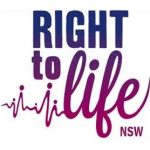Motions to move to committee – What happened?

In all other jurisdictions where abortion bills have been debated, lengthy committee processes where public submissions have been called for have ensued. Most recently, in Queensland, a consultation paper was released in December 2017 by their Law Reform Commission prior to the legislation being officially drafted, which called for submissions from the public. After a six month process, this Law Reform Commission produced a report. About two months later the Termination of Pregnancy Bill was introduced into the Queensland parliament, then referred to a parliamentary committee. This committee took several weeks to deliberate on the Law Reform Commission’s findings before reporting to parliament in early October 2018. The bill was then debated and passed that same month.
I am not advocating this to be an ideal process. In fact, let me be very clear: it was a biased processed orchestrated to bring about extreme abortion legislation in Queensland. It was, at least, an opportunity for Queenslanders to campaign against the bill, raise awareness of it and fully understand what was going on.
Here in NSW there was no real attempt to even pretend to consult broadly.
On Thursday 8th August 2019, before amendments to the bill in the lower house could be considered, Kevin Connolly, Member for Riverstone, attempted to move the extreme abortion bill, introduced into the NSW parliament just a week prior, into the Committee on Law and Safety for review with a report date of 17th September. This was defeated, 30 Ayes to 56 Noes. A resounding defeat.
Meanwhile, in the upper house, Natasha Maclaren-Jones had, earlier in the week (Tuesday 6th August) called for the bill to be referred to the Standing Committee on Social Issues for inquiry and report by Tuesday 20th August. A full month shorter than the inquiry called for by her colleague Kevin Connolly. This was a self-referral to the Committee which had met prior to the motion being brought to the upper house to discuss their wish to conduct a brief inquiry.
The upper house inquiry motion included a caveat that essentially meant that it could not begin until the bill had passed the lower house (presumably due to anticipated amendments). It also included the condition that the bill could be debated immediately after the report was tabled on the 20th August thus ensuring its swift passage through the upper house.
Rev Hon Fred Nile immediately moved for an extension of time for the Committee (of which he is a member) to inquire into the bill – asking for an extension to the 10th November.
Ms Abigail Boyd (also a member of the Committee), on behalf of the Greens, opposed the entire referral, stating that “[t]he delay would put the women of New South Wales through further unnecessary trauma as we give a platform to people who would rather shame and slander us for the choices we make about our bodies”.
The Hon Trevor Khan also objected to Rev Nile’s extension of time request, however he supported the shorter inquiry given that this was a “contentious bill”.
On Tuesday 6th August, this referral passed the upper house without division.
On Wednesday 7th August, the Committee held a deliberative meeting where it recorded its decision not to formally commence an inquiry or seek submissions until the bill had passed the lower house with amendment.
The Committee – the only form of public consultation on the extreme abortion bill in NSW – therefore officially began its inquiry on Friday 9th August and delivered its final, printed report to parliament just 11 days later.
Eleven days.
While I will post a blog on the contents of the hearing at a later stage, I think it is important to once again reflect on this process.
I also want to pause to thank Kevin Connolly and Rev Fred Nile for attempting to introduce a longer time frame for consultation. We will not – we cannot – forget those who have stood up against opposition on the floor of parliament to attempt to give us – the pro-life community – the chance to be heard. They stood up as a Voice for the Voiceless even in the “little” amendments on committees which are so easily overlooked and forgotten.
 Right to Life NSW
Right to Life NSW
